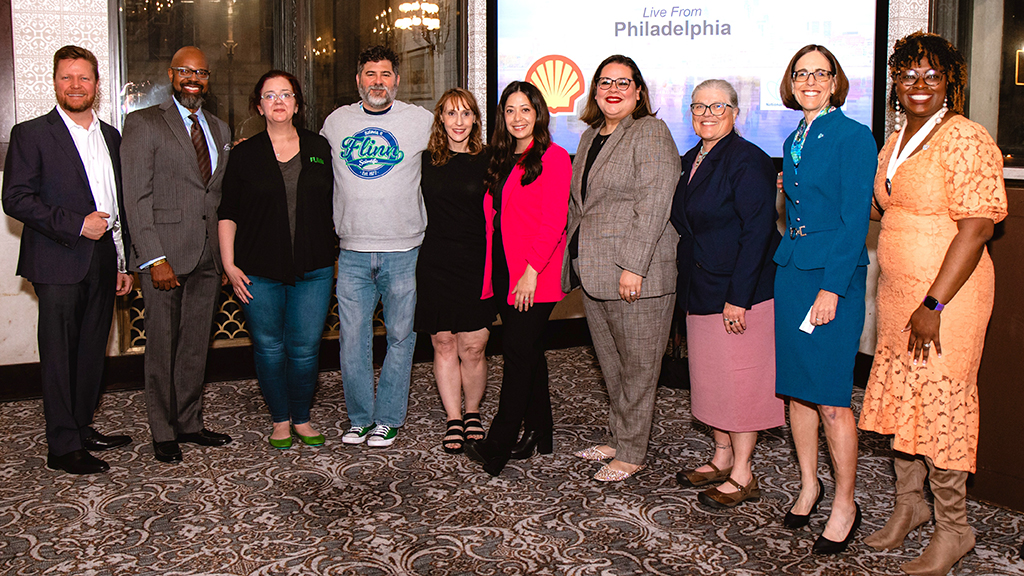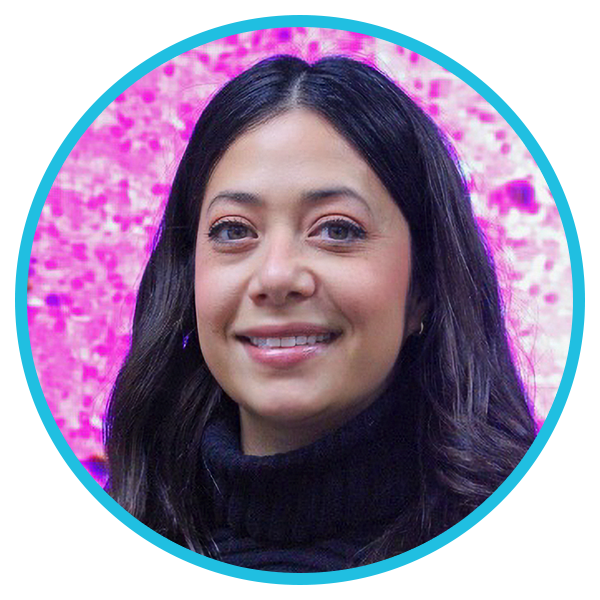2025 Winners
Shell Science Lab Regional Challenge


ELEMENTARY
Arianna Martinez Moody
Harvey Brown Elementary School
Houston, TX
Arianna Martinez Moody’s teaching philosophy integrates STEM and makerspace and provides students with 21st-century skills in hands-on lessons, which fosters curiosity, experimentation, exploration and creativity for all. She creates innovative, engaging, inquiry-driven lessons to spark students’ enthusiasm for learning and provides opportunities that extend cross-curricular to connect to phenomena and relate concrete abstract concepts. She cultivates a vibrant learning environment where students from under-represented and underserved communities can explore the wonders of STEM through hands-on, collaborative activities in a makerspace setting that fosters diversity and inclusiveness. She believes every child holds immense potential for curiosity, creativity, and problem-solving. Her teaching strategies include project-based learning, differentiation, playful learning, collaboration, and technology. The funds from this award greatly impacted Moody’s lab and science education by modernizing the lab with cutting-edge technology. Students now engage in interactive, engaging experiences and have the added benefit of safety upgrades. The upgraded lab offers exploratory, phenomenon-based 3D lessons. Students conduct investigations, ask questions, and develop solutions. Moody has also contributed to STEM awareness by sharing best practices with colleagues and at NSTA conferences. Measuring the grant’s impact on underserved students is crucial for ensuring equitable STEM and science education access; outcomes include increased participation and engagement, improved standardized test scores, and heightened interest in science and STEM careers. As students apply science skills in lab activities, they become effective, engaged, and eager to learn more about science.

MIDDLE SCHOOL
Cay Kovach
Brownsville Area Middle School
Brownsville, PA
Learn by doing is one of the main science teaching philosophies that Cay Kovach uses in her classroom. The engagement and excitement that she sees with students when they do hands-on learning is one of the fundamental experiences of her science classroom. The connections between the concepts and learning activities are best facilitated when it has kinesthetic learning opportunities. The majority of the activities have a student-centered experience where students participate in inquiry-based learning activities, including hands-on laboratories, projects, and presentations.
The funds from this award helped pay for more hands-on activities and materials that help students compete in the Pennsylvania Junior Academy of Science and PA Envirothon. This has impacted science learning districtwide. Pennsylvania is implementing the new STEEL Standards, and the school now has equipment that can be used to teach this. Seven teachers, ranging from kindergarten to twelfth grade, are now utilizing the newly acquired equipment to enhance their science instruction. This initiative, made possible through winning the competition, supports educators across all three district buildings, ensuring that the benefits of these advanced tools reach students of all ages. This approach fosters a deeper understanding of scientific concepts and allows students to engage with the material in a more meaningful way. The investment in such resources is a significant step toward improving the quality of science education across the district, benefiting both educators and students alike.

HIGH SCHOOL
Kathy Jo Sagwitz
Valley Junior/Senior High School
New Kensington, PA
Kathy Jo Sagwitz believes that the goal for science education is for students to experience the richness and excitement of knowing about and understanding the natural world. She feels that teaching creative thinking and problem solving are essential science skills. This is done through hands-on experiences that teach scientific concepts critical to student understanding. Labs and activities catch students’ attention and spark their interest in science. It is only through these firsthand experiences with problem solving and manipulation that students develop an understanding of scientific processes and the nature of science. These are the skills her students gain through labs and activities in her classroom. The funds from this award have transformed Sagwitz’s classroom and her students’ learning experiences. The microscopes, slides, digital scales, and biological models help with hands-on, inquiry-based lessons that engage students in ways that were not possible before. These tools help bring abstract concepts to life, foster real-world connections, and develop critical-thinking skills. The upgrades have created equitable opportunities for students to explore complex concepts in tangible ways. The networking opportunities through this award have allowed her to connect with colleagues nationwide, gain fresh perspectives, and collaborate on ways to improve STEM education in her classroom.

